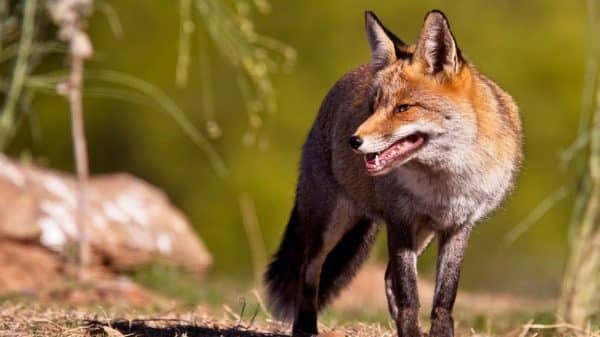Canny Spanish red fox
ON a warm, spring afternoon walk at Torrevieja La Mata Natural Park, I was lucky enough to spot a Spanish Red Fox, wary that it had been spotted, before disappearing into the bank of grasses nearby the lake.
The salt lake is known to have 2,000 different species of birds, highlighted by the fabulous Pink Flamingos.
A leisurely walk in Torrevieja La Mata natural park, along the sandy paths, consisting with different routes, are masses of grape fields that produce fine sweet white desert wine.
The salt lake of La Malta is an important area for bird life and other wild life, with the visitor centre visible from the N332.
In June, the fourth Torrevieja environmental month takes place, with the event including film, documentary, conference, concert and a theatre, promoting the protection of the environment of La Mata.
The sea and the need to care of the marine nature park is an important theme, Shark patrol, or “Patrulla Tiburon”.
A large sculpture of a hollow shark will be exposed, being a collection point for waste plastic, making people aware of the problem of plastics in the Mediterranean sea, and along coastlines of a plethora of beaches.
Spanish red fox
The Spanish red fox species looks similar to other foxes, insofar that it has an elongated skull, pointy nose, and big, triangular ears. It gets its name from its thick, red, or sometimes reddish-brown coat, as seen in La Mata, although it can change to tones of gray during the year.
In the winter, it eats fruits, while in the summer and spring it eats rabbits. Throughout the year, the fox will eat bird eggs, insects, and food from rubbish bins!
The Spanish red fox belongs to the Canidae family, along with wolves and coyotes, and the subspecies Vulpes vulpes silacea.
It’s known for being one of the smallest species of foxes on the European continent, having five toes on their front paws and only four on the back; a pawprint can easily be mistaken for a small dog’s tracks. Pawprint’s were spotted in La Mata.
To regulate its temperature, the red fox sticks out its tongue and pants, just like a dog would.
With respect to diet, foxes are an omnivorous species and can eat all types of food, with the Spanish red fox’s diet can and does change, according to the season.
In fall and winter, diet is mostly fruits, because there aren’t many animals in the open; in the spring and summer, their main diet is rabbit.
The Spanish red fox begins its active hours around sundown, and despite not having good eyesight, they use their incredible hearing and smell to get around.
Known for being silent and stealthy, staying hidden for hours in their dens and various terrains, like underbrush, caves, and rocks.
As creatures of habit, they spend most of their lives in the same territory and don’t venture out very far beyond the imaginary boundaries.








